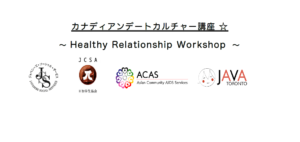This month’s On the Radar highlights information on the rules about hours of work and breaks, as featured on the Steps to Justice website.
Figuring out if Ontario’s laws apply
Ontario’s Employment Standards Act (ESA) has minimum standards that employers must follow, including rules about hours of work and breaks.
But not all jobs are covered by the ESA. And in some cases, only parts of the ESA apply.
Workers can use the Ministry of Labour’s online tool called Industries and Jobs with Exemptions or Special Rules to find out if their job is covered and which parts of the ESA apply.
Rules about hours of work
The ESA has general rules about hours of work.
In most jobs, the employer can say that workers must work 8 hours a day.
If an employer’s regular work day is more than 8 hours, they can say that workers must work the number of hours in the regular work day.
But in most jobs the regular work day can’t be more than 13 hours. And the regular work week can’t be more than 48 hours.
Rules about breaks
The ESA has general rules about breaks.
In most jobs, workers get at least 30 minutes off after every 5 hours of work. Or, a worker who agrees to it can get two 15-minute breaks instead.
The employer does not have to pay workers for this time. And employers don’t have to give any other breaks.
The “3-hour” rule
There’s a general rule about getting paid for at least 3 hours of work. This rule applies only if a worker has regular work hours that are longer than 3 hours a day.
The rule says that workers have to be paid for at least 3 hours even if they work less than 3 hours. For example, an employer might send someone home early because business is slow.
No rule about minimum hours
An employer does not have to give a worker any minimum number of hours of work.
And there is no rule about when an employer has to tell a worker what their schedule is.
Claiming rights as a worker
It’s against the law for employers to punish workers who ask about their rights or ask their employer to respect their rights.
And if an employer has not followed the rules in the ESA, a worker may be able to make a claim with the Ministry of Labour.
Most people don’t make claims against an employer that they’re still working for. This is because the laws to protect workers don’t stop employers from firing their workers.
And if a worker is fired, it’s up to them to take action against the employer to get what they’re owed.
Figuring out if a worker is an employee
Even if a worker signs something that says they’re an independent contractor or self-employed, they might still be an employee.
This means that the rules in the ESA might still apply to them. And they might have rights that an employee has.
The law says that whether a worker is an independent contractor or employee depends on many different factors.
A worker might need legal advice to figure it out.
Getting help
Workers who have questions about their rights and what they can do if their rights have not been respected may want to get legal advice.



